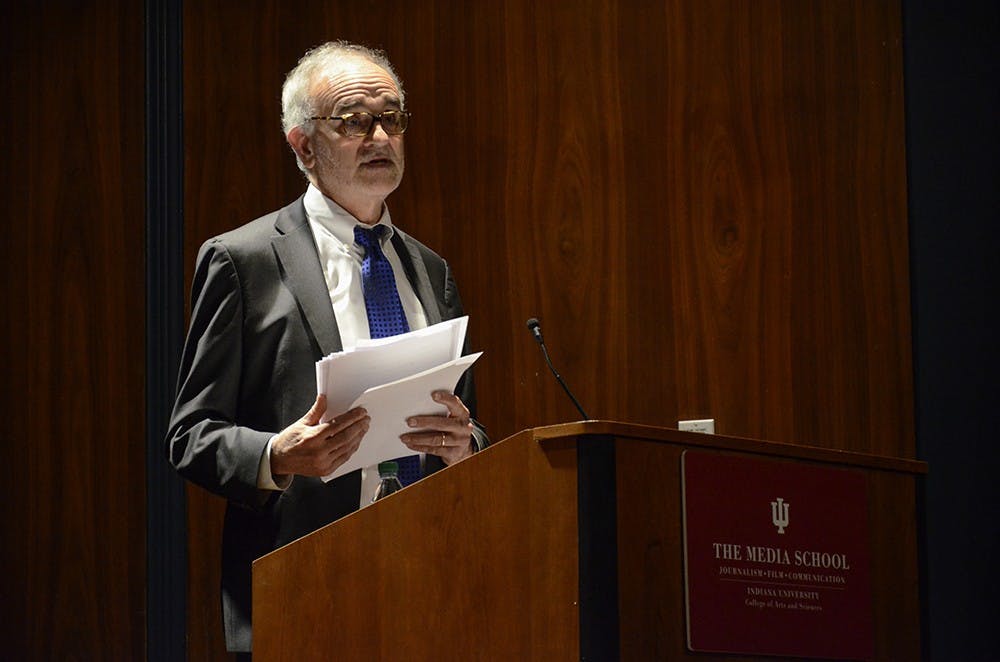Walt Bogdanich, three-time Pulitzer Prize winner and New York Times investigations editor and reporter, discussed investigating sexual assault on college campuses Tuesday at the Whittenberger Auditorium in the Indiana Memorial Union.
Bogdanich shared stories and lessons learned from starting his investigation of campus rape and why this field of journalism is necessary in this time of technological influence.
“Investigative journalists have a low threshold of indignation,” Bogdanich said. “Getting lashed out on is considered an occupational hazard.”
Bogdanich recalled the time he was part of a $6 billion lawsuit filed to him by a powerful company, according to Bogdanich, Philip Morris Cigarette Company. The company was suing him for libel for discussing the addictive qualities of nicotine.
Bogdanich discussed how these addictive qualities were manipulated by the company to sway customers to think otherwise of the health risks associated with cigarettes. The lawsuit ended when Bogdanich was able to prove all the points he posed.
To be an investigative journalist, Bogdanich said he is guided by two unwavering principles. One is the information that he needs is written down somewhere, he just has to find it. The second part is every person that has the information he seeks has a motive to give it to him.
“You must be creative, be sensitive, but don’t be passive.”? Bogdanich said.
Starting the investigation into campus rape was described as venturing into an emotional minefield.
Bogdanich focused on how well the institutions tasked with these cases dealt with them and with other ?institutions.
As the university became more worried of the story, it motivated Bogdanich and pushed him even more to pursue his investigation.
When his article on the rape case surfaced, neither the school nor police liked the portrayal of their institutions but didn’t deny any facts stated.
Following this story, sources began to contact Bogdanich about different cases — one case involving a girl at a private university.
After gaining the trust of the family Bogdanich was able to get a transcript of the panel that the victim had to approach to report her rape claim on campus.
Bogdanich revealed insufficient investigations carried out by the school to rightfully prosecute the person at fault in the rape case.
After this case, Bogdanich referred to himself as a member of “CSI: New York Times,” breaking the rumored idea of the slow death of investigative ?journalism.
“This is not an ideal world, you must find the best obtainable truthful report,” Bogdanich said.
Reporting in the perspective of Bogdanich goes beyond the guilt or innocence of the victims, making it frowned upon to use fake names at all costs and always reach out to the accused.
“Great journalism stirs people to action,” he said.
The lecture was the second event this semester as part of the Media School’s speaker series.






